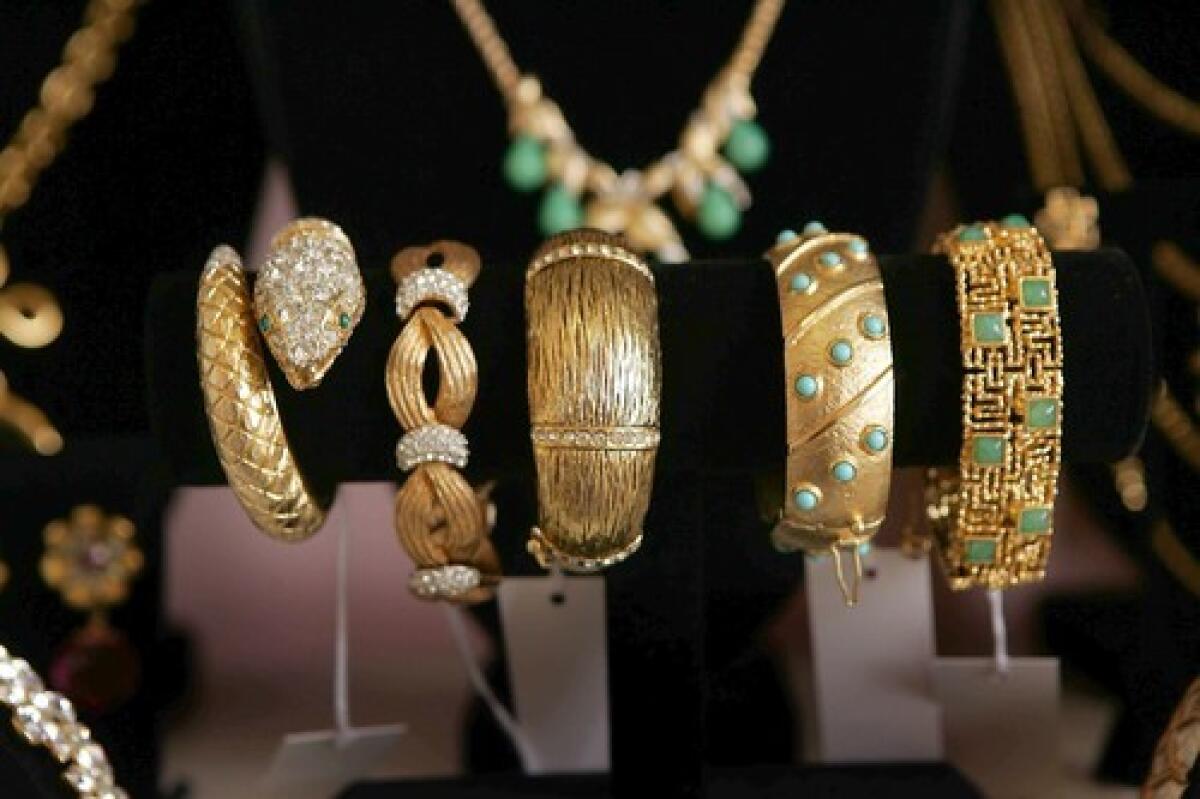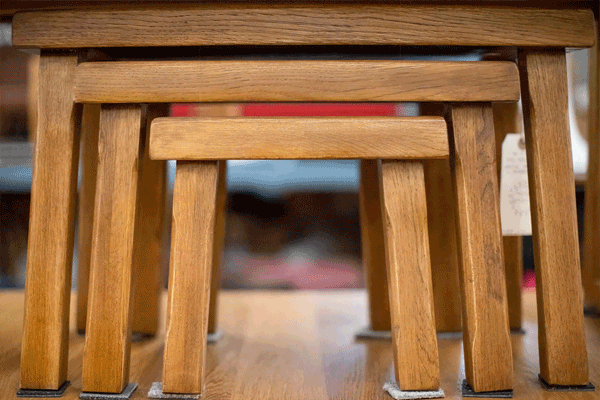The best places to sell unwanted clothes, art, furniture and more

Want a side hustle to finance holiday buying? Consider selling stuff you already own. Selling your lightly used possessions frees up space in your house and generates cash.
As the pandemic keeps stifling the economy, nearly half of Americans intend to participate in some sort of side hustle to finance holiday spending, according to a recent survey conducted by the Harris Poll. Fortunately for the time-constrained, you don’t need to take a second job or accept extra hours at work to make money.
Selling things you already own has become a relative snap thanks to dozens of websites that cater to niche buyers and sellers. And while all-purpose sales sites like Craigslist and EBay can be helpful, many niche sites sell things faster and with less hassle.
Most selling is done online. All you have to do is list what you have for sale and pop the item in the mail.
Clothes
Marykay Carota thinks Poshmark is the perfect place to sell used clothing. Carota started selling clothing six years ago, when she dropped 10 sizes after a gastric bypass surgery. Her closet was full of nice things she could no longer wear, and she wanted to make room for her new wardrobe.
She initially tried selling through EBay. But that service allows buyers a full month to return goods, and several buyers clearly wore Carota’s clothing before returning it, she said. So she turned to Poshmark.
Poshmark gives buyers just 72 hours to return items they believe have been misrepresented. Otherwise, sales are final. Better yet, Carota said, the site hooks into your social media accounts, which helped her plus-size clothing “fly out the door.”
She’s still on the site, selling her own used clothing as well as items she picks up in thrift stores. In a typical month, she earns between $900 and $2,000, she said.
Another plus: Poshmark provides the postage.
Two other sites — Mercari and the RealReal — also market themselves as clothing marketplaces. However, SideHusl does not recommend them.
Mercari is dogged by complaints about scammy buyers and a system that does little to discourage them. The RealReal charges big commissions and pushes sellers to reduce their prices to accommodate bargain hunters. The RealReal also gives itself authority to discount your goods by as much as 20%.
Furniture
When it comes to selling furniture, Sally Clary prefers Facebook Marketplace. The allure is simple: Buyers are local and mainly are either your friends or your friends’ friends, she said. With big items such as furniture, the final sale is usually done in person. Being part of the same friend group as the buyer makes the sale feel less risky, she said.
“I’ve tried selling on OfferUp,” Clary said. “But I didn’t get a lot of traction, and I felt less safe. On Facebook, because you are tied to your profile, the person knows who you are. There seems to be a lot more courtesy.”
Clary recently sold all the furniture she had in her Santa Monica apartment to facilitate a move to Austin, Texas. The whole process took a week, she said, and she didn’t need to discount items steeply to sell quickly.
Like Craigslist, Facebook Marketplace doesn’t charge a fee for a simple listing. The site charges only to “boost” a listing to increase the number of people viewing it. Boosts cost as little as $1 and had a big effect, Clary said. When she decided to sell her bike on her last day in Los Angeles, she spent $1 to boost the listing. The bike sold within hours.
Art
The best place to sell art depends on the type of work it is. If you are selling inexpensive art that you had on your walls, a local site such as Craigslist or Facebook Marketplace is probably your best bet. But if you’re selling expensive art, you’d be wise to sell through a dealer or a reputable auction house such as Sotheby’s.
What if you aren’t sure whether it’s high-end art? Get the piece appraised. After all, you don’t want to be the dope who sold a $9-million Jackson Pollock painting for $5.
What if you want to sell art that you created? Take a two-pronged approach. If you’re a professional artist, you should build a website to market your originals. You can also sign up with print-on-demand sites, such as Society6 and Redbubble, which will put your art on coffee cups, iPhone cases, T-shirts and hoodies and will pay you a royalty on each sale for providing the design.
Books
If you have textbooks, the best site to sell them is probably BookScouter, a marketplace that helps you find a competitive price. AbeBooks, meanwhile, makes a market in rare and out-of-print texts.
What about widely published paperbacks and hardcovers? If you have access to a local used book seller or garage sale, these are your best bets. Barring that, you can donate them to your local library and take a tax deduction for the garage-sale value.
There’s also Decluttr, which promises to buy a wide array of items, including books and videos, but has a reputation for losing shipments and paying less than was promised.
China and crystal
A company called Replacements purportedly helps people sell classic china and crystal. However, SideHusl does not recommend this site. Too many consumers complain that the site reneges on purchase offers once the goods are sent in, dramatically reducing the purchase price. And shipping breakable items is tough to do inexpensively.
However, this is an area where all-purpose sites such as EBay and Amazon can shine. These sites market worldwide, which increases the chance of finding a buyer who is looking for your exact pattern.
Both sites charge sales commissions and fees. You are also responsible for shipping the item safely. However, if you have name-brand glassware, these sites are likely to bring in top dollar.
Electronics
If you are selling a smartphone, electronic device or game, Swappa can connect you with people who want to buy it. The consumer-to-consumer model is likely to net sellers the best price. However, a number of resellers may also be interested in buying. For a full explanation of how to sell used electronics, check out our recent blog post “Best sites to sell a cell phone.”
Jewelry
When Tammy, a New York recruiter, ended her 10-year marriage, she deliberated over whether to keep her diamond engagement ring. She eventually decided the $17,000 ring was too valuable to sit in a drawer.
She signed up with Worthy and immediately got assigned a personal representative, who explained the sales process.
“Rachel was genuinely empathetic,” Tammy said. “Even though this is just a ring, there’s a psychological connection that was hard to let go of.”
Worthy was formed specifically to handle the resale of wedding and engagement rings after the relationship ends. While it’s rare to get full appraised value for any used jewelry, the site is one of two that SideHusl recommends for providing fair prices and reasonable terms. The other, Circa, also has a handful of brick-and-mortar offices where you can bring fine jewelry for an appraisal.
Jewelry can also be sold in person at many local jewelry retailers.
It’s wise to get several bids when you’re selling an expensive item. Jewelry typically sells for 40% to 60% of its appraised value, depending on the stone, setting and buyer. Local jewelers often sell to high-end clients. If they happen to have a client with your taste in gems, this can be the ideal option. If not, the online sales sites throw a wider net.
Wedding dresses
Among the many mini-tragedies of the pandemic are the canceled wedding celebrations. Financial services firm Loanry estimates that 1 in 10 couples who planned 2020 nuptials are still repaying loans for weddings they had to cancel.
Wedding dresses are among the major expenses that rarely can be returned or refunded. However, brides can resell their wedding attire through a handful of sites, such as PreOwned Wedding Dresses, Stillwhite and OnceWed. All three sites charge relatively modest fees — $20 to $30 — for advertising a dress. And the listing remains active for at least a year — that’s important, because wedding dresses don’t sell overnight.
Kristof is the editor of SideHusl.com, an independent site that reviews hundreds of money-making opportunities in the gig economy.
More to Read
Inside the business of entertainment
The Wide Shot brings you news, analysis and insights on everything from streaming wars to production — and what it all means for the future.
You may occasionally receive promotional content from the Los Angeles Times.










